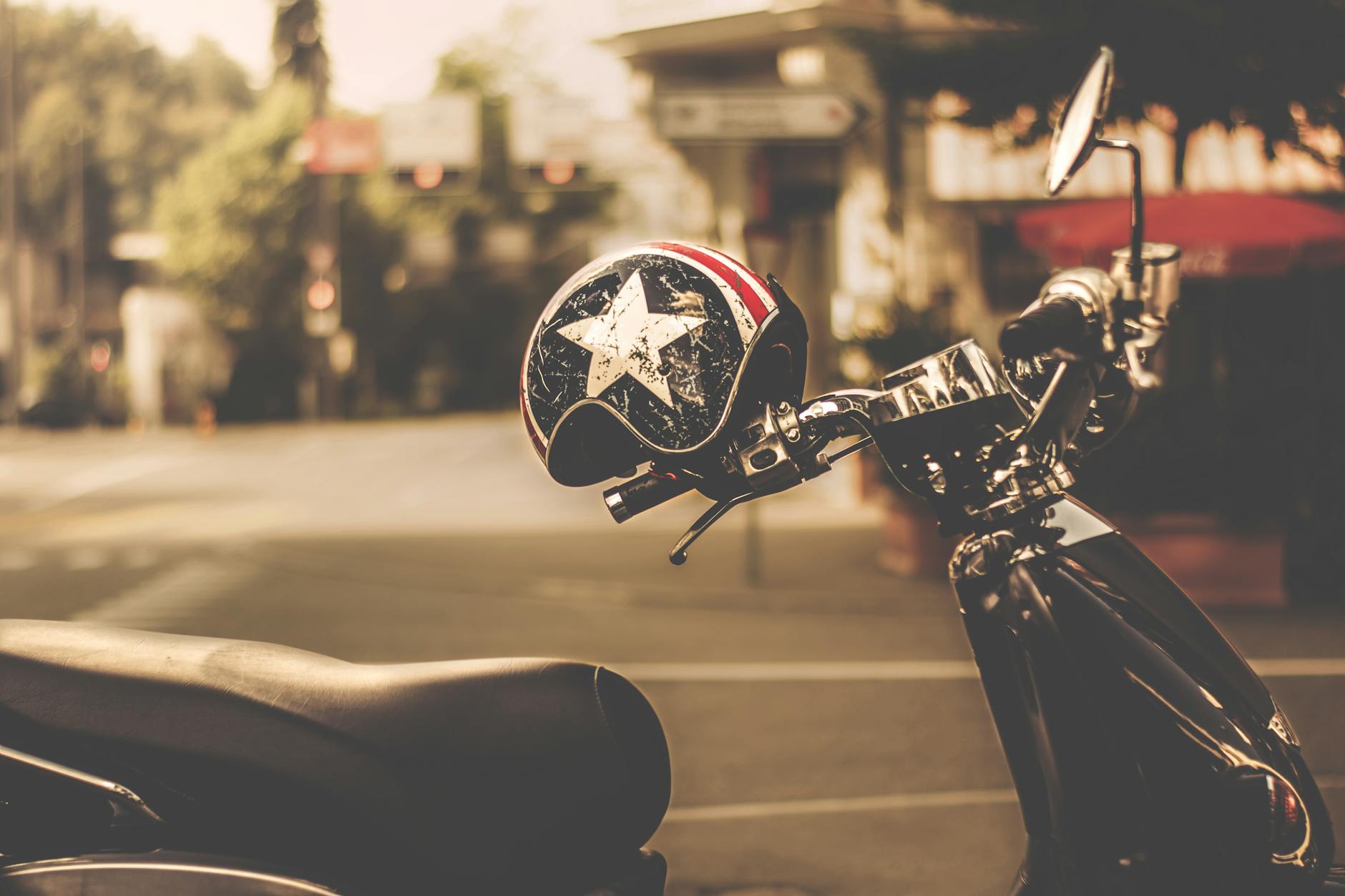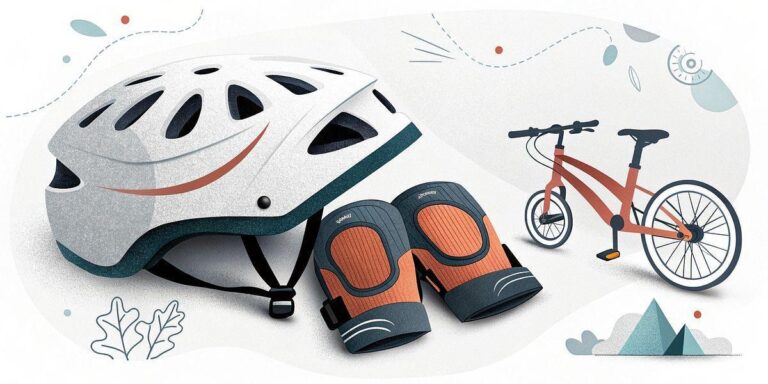How Long Are Girls Bike Helmets Good For? Shocking Truth Every Parent Needs to Know!
Why the Longevity of Girls’ Bike Helmets Matters
When considering your child’s safety while biking, the longevity of their bike helmet is critical.
Bike helmets don’t last forever, and knowing when to replace them can make all the difference in protecting your child during an unexpected fall.
Longevity is tied to various factors, including materials, usage, and exposure to environmental elements.
Let’s explore how these aspects contribute to maintaining maximum safety for your little rider.
- Kids Helmet: This kids bike helmet is suitable for 1-3-5-8-14 years old girls and boys, multiple colors for choose, adjustable toddler helmet size to accompany kids’ growth
- Double Protection: Bienbee kids helmet is made of ABS and thickening EPS foam, constitute multiple protection system
- Multiple Scenarios: This scooter helmet is designed for multiple-sports head protection, like skateboarding, biking, scooter, ice skating etc
- Stylish and Comfortable: Toddler helmet is lightweight (only 13.2 oz) with stylish design and comfortable with breathable foam around
- Available Size: 3 size available, x-small size is suitable for 1-3 years baby/toddler,small size is suitable for children aged 3-5-8 years old, medium size is for 8-14 years old kids
Last update on 2025-10-28 / Affiliate links / Images from Amazon Product Advertising API
Understanding Helmet Expiration Dates
Just like milk in your fridge, bike helmets have an expiration date.
Most manufacturers recommend replacing helmets every 3 to 5 years, even if they haven’t suffered any visible damage.
This timeline isn’t arbitrary; over time, helmet materials degrade, losing their ability to absorb impact effectively.
To keep your child safe, it’s essential to understand the expiration timeline and check for any manufacturer-specific guidelines.
Why does this matter?
Even if a helmet looks fine outside, the foam liner may become brittle and less effective, compromising its ability to protect during an accident.
For more insights into ensuring your child’s safety while biking, visit Bike Helmet Safety.
Did you know proper storage and care can sometimes extend a helmet’s usability?
While this is great, it’s important not to gamble with your child’s safety by stretching beyond the recommended time.
Wear and Tear Impact on Helmet Life
Every riding adventure leaves its mark, not just on your child’s memory but also on their bike helmet. Regular use contributes to the natural wear and tear of the helmet.
Factors like UV exposure from sunlight, frequent handling, and accidental drops can all diminish the lifespan of girls’ bike helmets.
Here are some common signs a helmet might need replacing:
- Cracks in the outer shell: Even tiny cracks can compromise safety.
- Degraded straps: If straps are fraying or feel loose, it’s time for a new one.
- Worn padding: The inner padding should be comfortable and intact; otherwise, the helmet won’t fit properly.
UV damage is particularly sneaky, as prolonged sun exposure weakens the protective layers over time.
If your child frequently leaves their helmet on bike handles or outside, it might age faster than expected.
Inspect the helmet closely after any minor impact, as this could weaken its structure internally.
For more practical safety tips on ensuring a snug and secure helmet, check out Choosing the Right Helmet for Your Child.
The takeaway?
Longevity isn’t just about years—it’s about protecting your child through careful attention to your helmet’s condition.
Remember to factor in usage and storage to get the most out of your investment in safety.
Safety Standards and Technological Advancements
Understanding helmet safety is as important as teaching your child the road rules when it comes to keeping them safe on their bike.
Modern girl’s bike helmets meet basic safety standards and evolve with technological advancements designed to provide maximum protection.
Let’s explore key signs that indicate it’s time for a new helmet and why innovations like MIPS are worth the upgrade.
Signs That It’s Time to Replace a Helmet
You might wonder how to tell when your child’s helmet is no longer safe.
Fortunately, there are some clear indicators that a replacement is due:
- Visible Cracks: Even small cracks in the outer shell show that the helmet has been compromised.
- Compressed or Worn Padding: Interior foam or padding that feels stiff or oddly shaped is no longer effective at absorbing impact.
- Strap Issues: If the straps are frayed, loose, or fail to hold a snug fit, the helmet’s safety is severely reduced.
- History of Impact: Most helmets must be replaced after any crash or hard fall, even without visible damage.
It’s always better to replace a helmet sooner than risk a faulty one.
For more insights into how bike helmets function to protect your child, check out Do Bike Helmets Actually Work?.
- STYLE & DESIGN – Designed after the tried and true classic bicycle helmet, low profile with great coverage in a variety of colors.
- FIT SYSTEM – Features our True Fit system for easy one step adjustment every time you ride, it’s that simple!
- PINCH GUARD – The patented Pinch Guard buckles ensures pinch free buckling.
- COMPLIANCE – Complies with the U.S. CPSC Safety Standard for Bicycle Helmets for Persons Age 5 and Older.
- SPECIFICATION – Recommended for children ages 5-8, but will fit most heads measuring 52-56cm. Important: Always take a head measurement. Head sizes and shapes can vary, even within an age range. Using a helmet that does not fit can be dangerous.
Last update on 2025-10-28 / Affiliate links / Images from Amazon Product Advertising API
How New Helmet Features Improve Safety
The world of bike helmets has come a long way.
Modern features are transforming what used to be a simple safety device into a piece of advanced protective gear.
One standout technology is MIPS (Multi-Directional Impact Protection System).
MIPS reduces rotational forces on the brain during angled impacts, which can be critical in preventing traumatic injuries.
Are you curious about MIPS?
Learn more from What is MIPS Helmet Technology?.
Other advancements include:
- Integrated Impact Protection Layers: Some helmets now have reinforced shells or additional layers to disperse force better.
- Custom Fit Adjusters: Dial-fit systems allow for a snug fit, improving safety by minimizing movement during impact.
- Breathable and Lightweight Materials: Modern materials enhance comfort while maintaining durability, making it easier for kids to wear helmets consistently.
Remember, older helmets may not comply with today’s enhanced safety standards, such as the CPSC certification.
If your child’s helmet is outdated or worn, upgrading doesn’t just ensure better protection—it gives you peace of mind.
For tips on selecting compliant options, visit Choosing a Kids Bike Helmet: Ultimate Guide for Safety.
When did you last check your child’s helmet for these signs, or did you consider upgrading to a better model?
Staying proactive might be the key to preventing serious injuries.
 Photo by Caleb Oquendo
Photo by Caleb Oquendo
Best Practices for Maintaining Girls Bike Helmets
Properly maintaining your child’s bike helmet is crucial to ensuring it remains safe, durable, and comfortable for their adventures.
A well-cared-for helmet not only lasts longer but also provides consistent protection.
Here’s how you can keep girls’ bike helmets in top shape.
Cleaning and Storing Helmets
Cleaning a helmet isn’t just about removing dirt; it’s essential for hygiene and longevity.
Sweat, dirt, and oils from use can degrade materials over time, so keeping them clean is critical.
- Use mild soap and water. Choose gentle cleaners that won’t harm the helmet’s foam or shell. Avoid strong chemicals that may weaken the materials. Using a soft sponge, gently scrub the exterior and interior padding.
- Remove detachable parts: Many helmets have removable liners or pads. Clean these separately for a more thorough wash.
- Air dry only: Never use dryers or place the helmet near direct heat sources, as this can warp the materials.
- Store in a cool, dry place: Keeping the helmet in a shaded, ventilated area ensures it stays protected from UV rays and excessive heat, which can weaken its structure. Avoid leaving it in a hot car or under direct sunlight for long periods.
For more tips on helmet care specifics, check out Choosing a Kids Bike Helmet: Ultimate Guide for Safety.
 Photo by Vlad Vasnetsov
Photo by Vlad Vasnetsov
Inspecting Helmets Regularly
Just like a car needs routine check-ups to ensure it’s road-ready, girls’ bike helmets require regular inspections to confirm they’re still providing the whole level of protection.
Here’s what to look for:
- Outer Shell: Examine the helmet for cracks, dents, or scratches on the outer shell. Even minor damage can compromise its ability to absorb impact.
- Inner Foam: Check the foam liner for compression or crumbling. This part absorbs shock, and any wear here suggests the helmet may no longer be effective.
- Straps and Buckles: The fit is just as important as the helmet itself. Look closely at the straps for signs of fraying or looseness. The buckle should snap securely and stay in place.
- Padding Condition: Inner padding contributes to fit and comfort. Replace if it’s thinned out, torn, or feels stiff.
Inspecting and identifying any issues early can extend the helmet’s life without compromising safety.
For additional safety insights, explore this guide on Girls Bike Helmet Reviews.
Remember, a helmet protects your child’s most valuable asset—their head.
A little extra care goes a long way toward ensuring that every ride is safe and enjoyable.
- Comfortable Design: LX LERMX Kids bike helmet for toddlers to Youth Size combines a super strong injection molded outer shell and a shock absorbing protective foam inner shell. Safely protects their little noggins from impact while providing comfort
- Light Wight: The lightest option for helmets – approximately 7.5 oz, without sacrificing safety, kids won’t feel tired after hours of wearing.
- Adjustable Fit: Adjustment dial system & adjustable straps. circumference: 18. 9 to 21. 3 inches(45cm-54cm). One helmet can serve your children from 5 to 14 years old.
- Perfect Choice: Toddler helmet perfect for bike, bicycling, longboarding, roller, and inline skating, skateboarding, scooter, rollerblading, pogoing and all kinds of indoor and outdoor activities. It’s a perfect gift for your Children
- Suitable for various outdoor sports such as cycling, skateboarding and so on.
Last update on 2025-10-28 / Affiliate links / Images from Amazon Product Advertising API
FAQs About Girls Bike Helmets Lifespan
Parents often have a lot of questions when it comes to bike helmets:
How long should they last?
Can they be reused after an accident?
Are there ways to extend their lifespan?
Understanding these answers is crucial to ensuring your child’s safety while riding.
Below, we’ve compiled answers to the most common queries about girls’ bike helmet lifespans.
Can Helmets Be Reused After a Crash?
The short answer: No, helmets should not be reused after a crash.
Even if a helmet looks fine outside, the impact may cause internal damage to the foam liner that isn’t visible.
This liner is specifically designed to absorb the force of impacts, and once it does, its protective capability diminishes.
Picture a car’s airbags after deployment—they can’t be reused for another crash. Helmets work similarly.
It’s always best to err on caution by replacing the helmet after any significant fall or bump.
You can learn more about reliable helmet options by checking out the SafeheadTOTS Adjustable Bike Helmets.
 Photo by Lum3n
Photo by Lum3n
What Affects Helmet Durability the Most?
Several factors can influence the lifespan of girls’ bike helmets:
- Material Degradation: Over time, the foam and plastic shell can break down, even without visible damage, reducing the helmet’s ability to absorb shock.
- UV Exposure: Prolonged exposure to sunlight can weaken the materials. If the helmet spends a lot of time outside, it may need replacing sooner.
- Wear and Tear: Straps can fray, buckles might weaken, and padding can wear out, compromising stability and comfort.
- Temperature Extremes: Storing helmets in hot cars or freezing garages can accelerate material deterioration.
To slow down the wear and tear, store helmets in a cool, dry spot and avoid leaving them in direct sunlight.
For advice on selecting more durable models, consider reading Comfortable Girls Bike Helmets.
- 【Special Design for Girls 】Head Circumference 52-56cm/20.5in-22in with adjustable knob,fit for most of toddler and kids. Approximately Age from 3 – 10 years. the various color girl helmet very easy to catch children’s eyes, standing out. makes them WANTS to wear their cute helmet while many sports.
- 【Safety and Certification 】all of the helmet passed the 16& CFR 1203 and CPSIA certification, Built for comfortable and impact resistance with reinforced PC shell L & high-density shock-absorbing EPS core
- 【Adjustment-Comfortable】Head Circumference 52-56cm/20.5in-22in with adjustable knob . 12 individual air vents that will keep Cool & Comfortable.It will provide more than adequate protection until your child’s noggin grows out of it and is ready for a big kid helmet.It comes with extra EPS foam padding inside for comfort and protection.
- 【A Helmet for Multi-sport 】-As soon as your toddler and kids starting rides a tricycle, bike trailer ,scooter bicycle ,roller skate, Teaching children early about safety and creating good safety habits is essential part of sports.
- 【Keep Satisfied 】The lightweight helmet(230g) targeted for girl toddler and child sports .we live by one simple belief: keep the safe, keep the moving. 100% Satisfied
Last update on 2025-10-27 / Affiliate links / Images from Amazon Product Advertising API
How Often Should Helmets Be Replaced?
Most experts recommend replacing bike helmets every 3 to 5 years, even if they have not been involved in a crash.
The Consumer Product Safety Commission (CPSC) and many manufacturers highlight this timeframe due to material aging and updates in safety standards.
For more insights into when to replace your helmet, check out this helpful article on When You Really Need to Replace Your Bike Helmet.
Still, using a helmet from when your child first started riding?
It might be time to upgrade for safety reasons and because newer models incorporate advanced features like MIPS (Multi-Directional Impact Protection System).
Does Proper Helmet Care Make a Difference?
Absolutely!
A helmet that’s cared for properly can last closer to its maximum lifespan.
Some quick tips include:
- Gently clean with mild soap and water.
- Avoid using harsh cleaning agents that might degrade materials.
- Ensuring the helmet is stored in a dry, shaded area.
- Inspecting frequently for damage like cracks, loose straps, or worn padding.
Regular checks and proper maintenance increase reliability and safety.
For more details about maintaining helmets effectively, see Helmet and Pad Set.
Understanding when and why to replace a helmet is essential for your child’s safety.
By answering these key FAQs, you’re taking an essential step in keeping their biking adventures fun and accident-free!
Conclusion
Regularly replacing girls’ bike helmets is essential in keeping your child safe during their biking adventures.
While helmets are built to protect, factors like materials degrading over time, regular wear, and exposure to the elements reduce their effectiveness.
Building a habit of inspecting the helmet for visible damage or signs of aging ensures you stay proactive about safety.
When needed, upgrading to newer helmets with modern features, such as MIPS technology, can provide extra protection and peace of mind.
For more tips on choosing the ideal helmet for your child, explore Bike Safety 101 – Choosing the Best Helmet for Your Child.
Make safety a top priority every step of the way.










